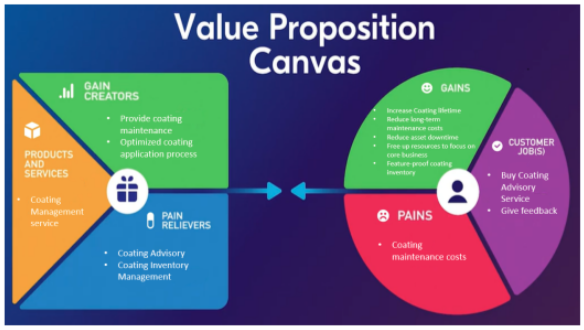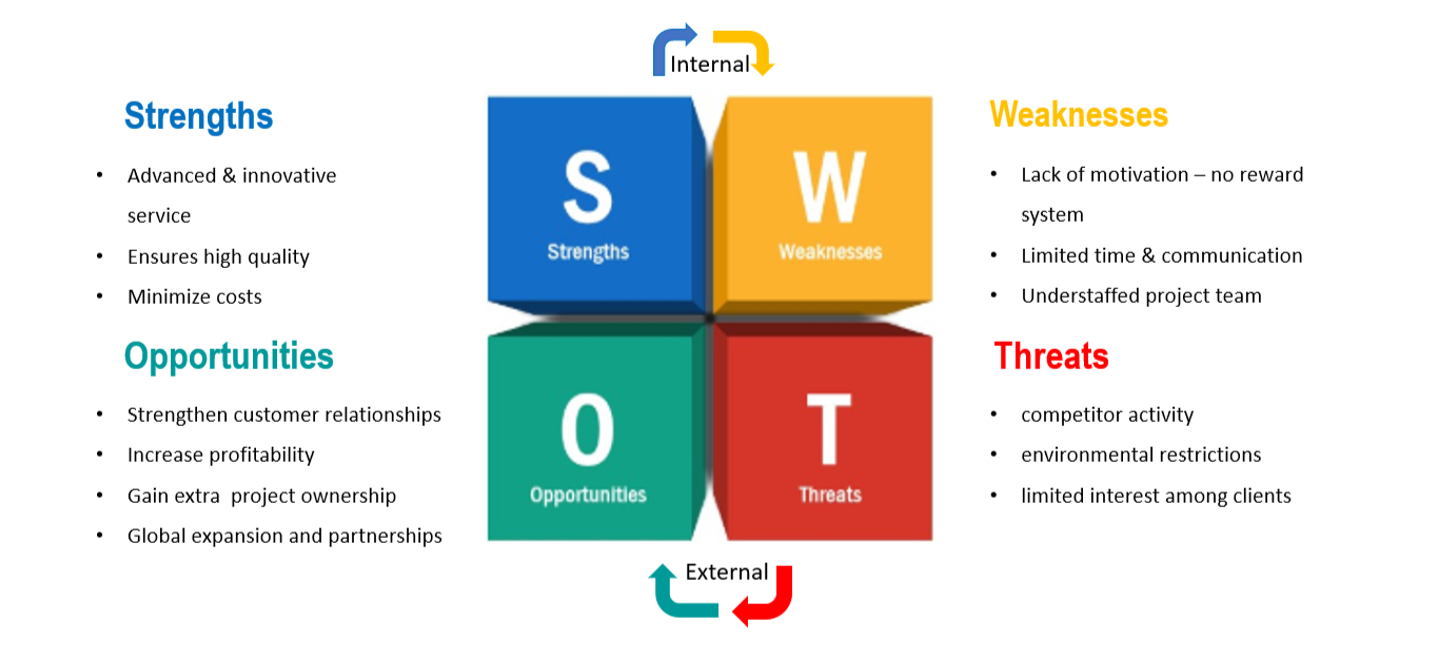Hempel Coating Management
| Line 17: | Line 17: | ||
== Tools == | == Tools == | ||
| − | + | [[File: Iron triangle]] | |
The iron triangle illustrates the relationship between cost, time and quality (TCQ). When planning a project, the project managers are highly advised to take into consideration these three parameters. TCQ model | The iron triangle illustrates the relationship between cost, time and quality (TCQ). When planning a project, the project managers are highly advised to take into consideration these three parameters. TCQ model | ||
Revision as of 19:00, 26 February 2020
Introduction
As part of Hempel’s newly formed service organization, a number of development projects of new services have been planned coupled with several operational upgrades. A foundational service offering is “coating advisory”. This service includes sending expert coating advisors to oversee surface preparation and coating application of the products. Initially, Hempel acquired two levels of coating advisory, Standard coating advisory, and Premium coating advisory. After collaborating with key customers, a third level was developed for the marine segment where the company took over the responsibility of planning the dry-docking projects. Drydocking projects are referring to fixed duration re-coatings of vessels, which takes place every five years according to regulatory requirements. In marine, this new service was called “Project Management”. Therefore, the scope of this project was to develop a similar third-tier service for the protective segments. By doing so, they offer more than premium coating advisory and they could provide more value and earn more per hour.
Tools
The iron triangle illustrates the relationship between cost, time and quality (TCQ). When planning a project, the project managers are highly advised to take into consideration these three parameters. TCQ model is considered to be a useful management tool to show management focus and measure any management success. The project manager has to have the proper knowledge regarding the relations between the constraints of TCQ and the right ones to get prioritized in their project.
Application of tool
On the hempen project, time and quality were the two constraints that were prioritized. Such prioritization helps the project team to make quick decisions and focus effort on what is most relevant. Quality is a very significant parameter since delivering trusted services and premium coating advisory are mainly implemented in this project. Time is also a highly influential factor in this case, as this specific concept had been attempted and failed in the past. Therefore, the Hempel case can be located in the middle of time and quality constraints.
Value Proposition Canvas
- Romina
As it is shown in Figure there are several reasons for the clients to invest in an advanced coating management service. The proactive nature of the optimized coating service provides to the customers the ability to avoid long-term maintenance costs that are related to accidents, environmental conditions, and other common problems. The accurate inspection that took place before the initiation of any project also ensures better quality for the final results and reduces asset downtime. So from the customers' point of view, it seems like an attractive offer. On the other side, the fact that competitors are providing a standard coating advisory service at the early stages of a project to their clients for free might have negative effects(pain creators) on customers’ preference, because in this case, they have to pay extra for this advanced coating management service. However, an important difference is that this service provides full inspection and maintenance coating management for a long period after the completion of a project and that is why it is differentiated from other coating advisory services.
Customer segment: The focus on the customer segment side is on why; why is there a need for project initiation?
Customer job(s): The customer job(s) assess what the customer wants to do, which actions or tasks does the customer or user want to perform. In the South Sudan case, the users have a very basic customer job in the accessibility of clean drinking water.
Pains: The pains tell which negative effects the user is experiencing for the status quo. This can be a result of competitors lacking the necessary capabilities to offer a proper product or service. It can also be a result of users not having access to any products or services to fulfill their customer job. The project manager must acknowledge these customer pains, in order to identify the benefits project outcomes need to incorporate. [1]
Gains: Unlike pains, gains are not factors that are clear for the user. These are factors that the user is not necessarily expecting of a product or service, but are extra benefits supplied. Gains are not essential for project success, but rather an area where project managers can differentiate their project outcomes. In the South Sudan case, the gains delivered came in the form of education in hygiene, local training of staff and clean toilet facilities. Instead of only providing clean drinking water, the consulting company provided extra features, which the company differentiates itself in the highly competitive market of consultancy.
Value proposition: From the customer segment side to the value proposition the focus changes from why to what and how; what will the project delivery and how will the project deliverables satisfy customer needs?
Products & services: Outlines the products and services the project outcome is built around.
Pain relievers: Pain relievers are ways of removing the customer/user’s pains. These deliverables are essential for user satisfaction. The pain relievers are not always in the form of products and services but can be features of these deliverables that solve customer/user pain of the status quo. Niras conducted construction work to create improved water wells for local communities in need as well as using local companies for maintenance for a sustainable solution.
Gain Creators: The gain creators are deliverables creating the extra gains for the customer/user. In the South Sudan case, this was enabled by creating education and training programs, spending extra resources to create extra value for the users.
SWOT Analysis
- Ian
Identification is the first step in uncertainty analysis. It is necessary to identify all possible risks and develop risk management by focusing attention where needed. It is also important to specify the objective of the project and identify the internal and external factors that are favorable and unfavorable to achieving that objective. SWOT tool is appropriate to implement the strengths and weaknesses that arise from within the company, as well as the opportunities and threats from external sources [6].
Figure 11: SWOT analysis Based on the information from the interviews a SWOt analysis was carried out. It seems that the main threat of the case is the competition that Hempel will have to face in the future, by expanding their portfolio into advanced coating management. As the project manager mentioned himself, there are several companies in this area that offer the service of coating management in other large companies and clients for free, and this occasion appears to be a threat. However, through this project, Hempel develops more premium coating advisory, including maintenance training and advanced services offered by charge. From another point of view, this differentiation can be identified as an opportunity to increase their profits and strengthen their customer relationships.
Risk Assessment - Dimitra
Conclusion
Cite error:
<ref> tags exist, but no <references/> tag was found

